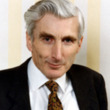The number of the heavens: a history of the multiverse and the quest to understand the cosmos
Description
The award-winning former editor of Science News shows that one of the most fascinating and controversial ideas in contemporary cosmology—the existence of multiple parallel universes—has a long and divisive history that continues to this day.We often consider the universe to encompass everything that exists, but some scientists have come to believe that the vast, expanding universe we inhabit may be just one of many. The totality of those parallel universes, still for some the stuff of science fiction, has come to be known as the multiverse.The concept of the multiverse, exotic as it may be, isn’t actually new. In The Number of the Heavens, veteran science journalist Tom Siegfried traces the history of this controversial idea from antiquity to the present. Ancient Greek philosophers first raised the possibility of multiple universes, but Aristotle insisted on one and only one cosmos. Then in 1277 the bishop of Paris declared it heresy to teach that God could not create as many universes as he pleased, unleashing fervent philosophical debate about whether there might exist a “plurality of worlds.”As the Middle Ages gave way to the Renaissance, the philosophical debates became more scientific. René Descartes declared “the number of the heavens” to be indefinitely large, and as notions of the known universe expanded from our solar system to our galaxy, the debate about its multiplicity was repeatedly recast. In the 1980s, new theories about the big bang reignited interest in the multiverse. Today the controversy continues, as cosmologists and physicists explore the possibility of many big bangs, extra dimensions of space, and a set of branching, parallel universes. This engrossing story offers deep lessons about the nature of science and the quest to understand the universe.
More Details
067497588
Table of Contents
From the Book
Similar Titles From NoveList
Similar Authors From NoveList
Published Reviews
Choice Review
Today's big mysteries of science lie at two extremes: what makes up the unfathomable expanse of our cosmos? And how does our brain function? Accomplished science writer Siegfried here addresses the first question in historical context, navigating from the ideas of ancient Greek philosophers to those of modern-day cosmologists as they pertain to the concept of a multiverse. The book, which has an excellent index and references, traces the history of this idea from antiquity to the present, and is peppered with thumbnail sketches of the philosophers and scientists who contributed to advancing our knowledge of the cosmos. Chapters 1--8 discuss the contributions of individuals from the English philosopher Grosseteste to notables like Copernicus (13th--16th century). The earliest suggestion for multiple universes seems to have come from an English surveyor/amateur astronomer, Thomas Wright (18th century). Edgar Allan Poe, who was well versed in mathematics and astronomy, expanded on this, presciently writing of a multitude of star clusters in Eureka (1848, CH, Mar'05, 42-3911). The last five chapters bring the story to modern times, attempting to address along the way the inherent problem with quantum physics (uncertainty). As shown by Siegfried, the very definition of the universe has changed through the ages. Summing Up: Recommended. All readers. --Nanjundiah Sadanand, Central Connecticut State University
Publisher's Weekly Review
While many might think of the idea of the multiverse as something new, science writer Siegfried (A Beautiful Math) describes how this seemingly fanciful concept--that this universe is one of many--has been accepted by thinkers and philosophers for millennia. Siegfried opens his detailed history with the ancient Greeks, when "atomist" philosophers imagined "innumerable worlds" created by the motion of spinning atomic whirlpools. The multiverse lost ground when Plato insisted on a perfect singular cosmos, fueling his student Aristotle's claims that there could only be one universe. These dominated the scientific consensus until 1277, when the Bishop of Paris, Étienne Tempier, announced that God was fully capable of creating more universes, and that anyone saying otherwise would face excommunication. Siegfried profiles fascinating figures over the centuries, such as medieval polymath Roger Bacon, natural philosopher William of Ockham, and astronomer Nicholaus Copernicus. The author also explains groundbreaking ideas such as Albert Einstein's infamously difficult cosmological constant, quantum mechanics, and the big bang. This clear and thoughtful work of popular science serves as a fascinating history of one of the most provocative concepts in modern physics, while also tracing its roots in ancient ideas and exploring its implications for this universe and others. (Sept.)
Library Journal Review
The 2015 discovery of gravitational waves launched an increase in popular treatments of physics and astronomy topics. What sets this book by Siegfried (Strange Matters) apart from others is the quality of his writing, as well as the direct links he draws between contemporary and ancient views of the multiverse concept. As he notes, the debate on whether there are one or many universes continues among contemporary thinkers. The former editor of Science News, Siegfried attended cutting-edge physics conferences, and draws upon conversations with researchers at the meetings to bring immediacy to the modern-day portions of the book. His reading in medieval philosophy that prompted him to write the book provides an equally solid base. VERDICT This well-written book explores the concept of more than one universe than ours, drawing on the musings of philosophers, astronomers, and physicists from the ancient Greeks, through medieval thinkers such as Nicolaus Copernicus and Max Planck to Albert Einstein and current cosmologists Rocky Kolb and Joe Lykken. It will intrigue YA readers on up.--Sara R. Tompson, Lawrence, KS
Library Journal Reviews
The 2015 discovery of gravitational waves launched an increase in popular treatments of physics and astronomy topics. What sets this book by Siegfried (Strange Matters) apart from others is the quality of his writing, as well as the direct links he draws between contemporary and ancient views of the multiverse concept. As he notes, the debate on whether there are one or many universes continues among contemporary thinkers. The former editor of Science News, Siegfried attended cutting-edge physics conferences, and draws upon conversations with researchers at the meetings to bring immediacy to the modern-day portions of the book. His reading in medieval philosophy that prompted him to write the book provides an equally solid base. VERDICT This well-written book explores the concept of more than one universe than ours, drawing on the musings of philosophers, astronomers, and physicists from the ancient Greeks, through medieval thinkers such as Nicolaus Copernicus and Max Planck to Albert Einstein and current cosmologists Rocky Kolb and Joe Lykken. It will intrigue YA readers on up.—Sara R. Tompson, Lawrence, KS
Copyright 2019 Library Journal.Publishers Weekly Reviews
While many might think of the idea of the multiverse as something new, science writer Siegfried (A Beautiful Math) describes how this seemingly fanciful concept—that this universe is one of many—has been accepted by thinkers and philosophers for millennia. Siegfried opens his detailed history with the ancient Greeks, when "atomist" philosophers imagined "innumerable worlds" created by the motion of spinning atomic whirlpools. The multiverse lost ground when Plato insisted on a perfect singular cosmos, fueling his student Aristotle's claims that there could only be one universe. These dominated the scientific consensus until 1277, when the Bishop of Paris, Étienne Tempier, announced that God was fully capable of creating more universes, and that anyone saying otherwise would face excommunication. Siegfried profiles fascinating figures over the centuries, such as medieval polymath Roger Bacon, natural philosopher William of Ockham, and astronomer Nicholaus Copernicus. The author also explains groundbreaking ideas such as Albert Einstein's infamously difficult cosmological constant, quantum mechanics, and the big bang. This clear and thoughtful work of popular science serves as a fascinating history of one of the most provocative concepts in modern physics, while also tracing its roots in ancient ideas and exploring its implications for this universe and others. (Sept.)
Copyright 2019 Publishers Weekly.





























